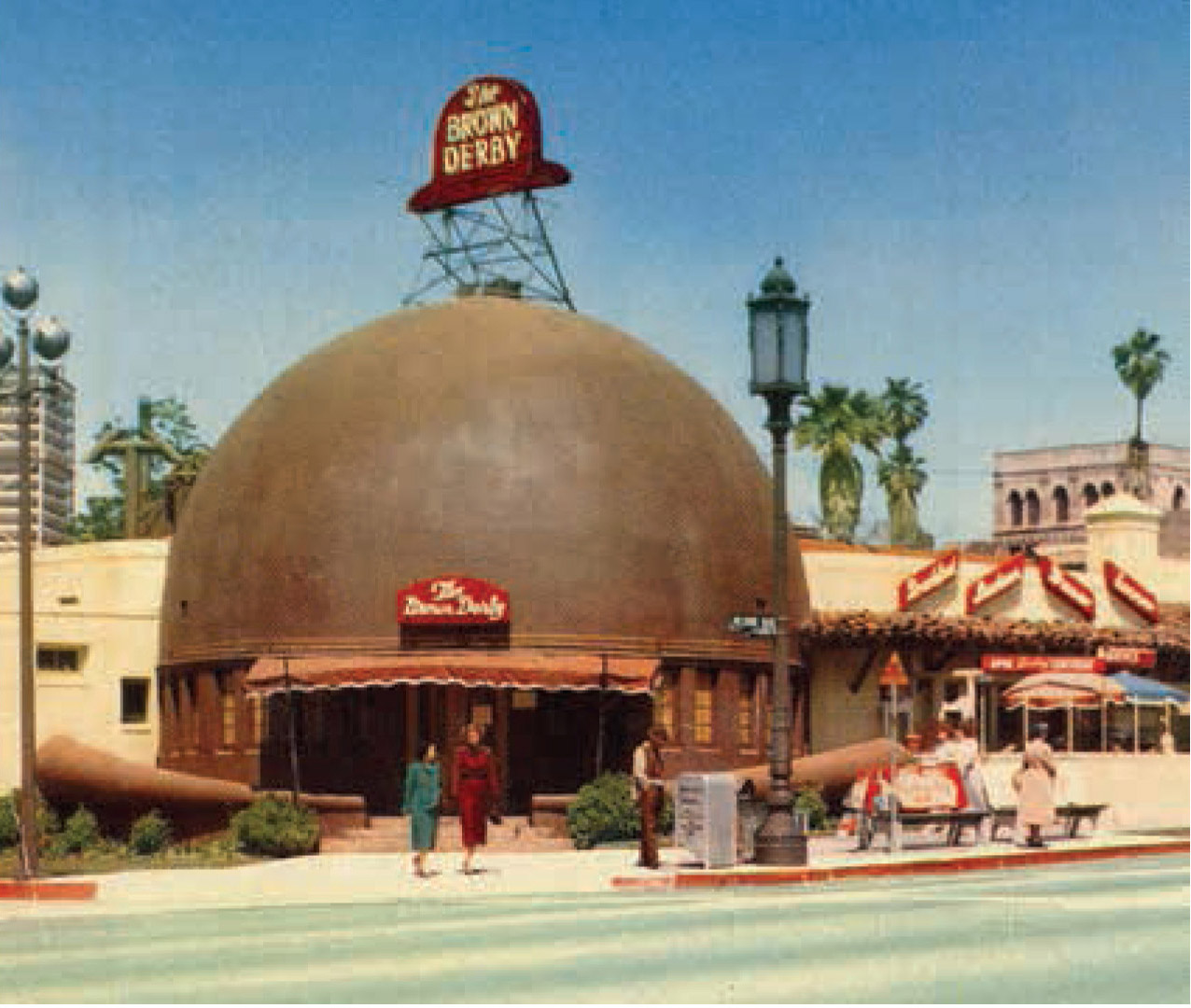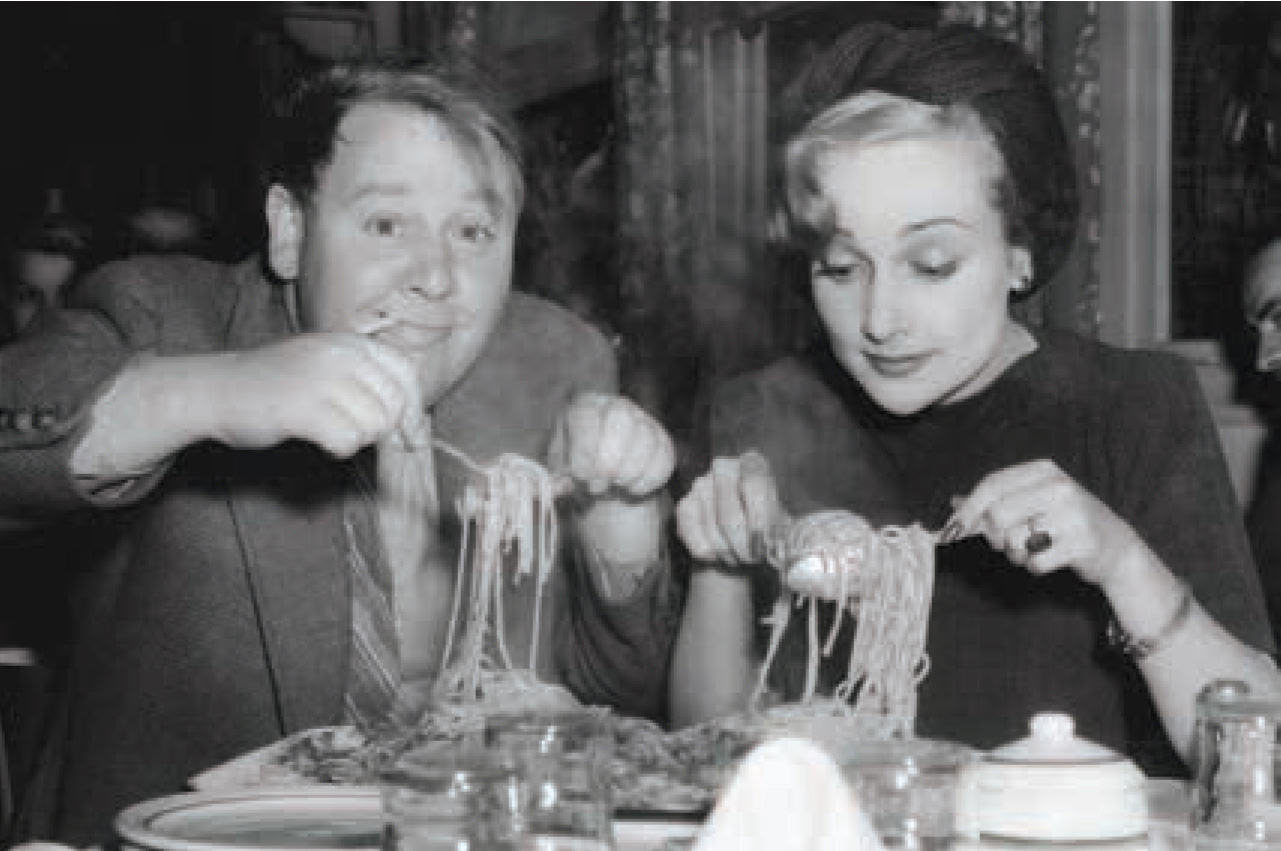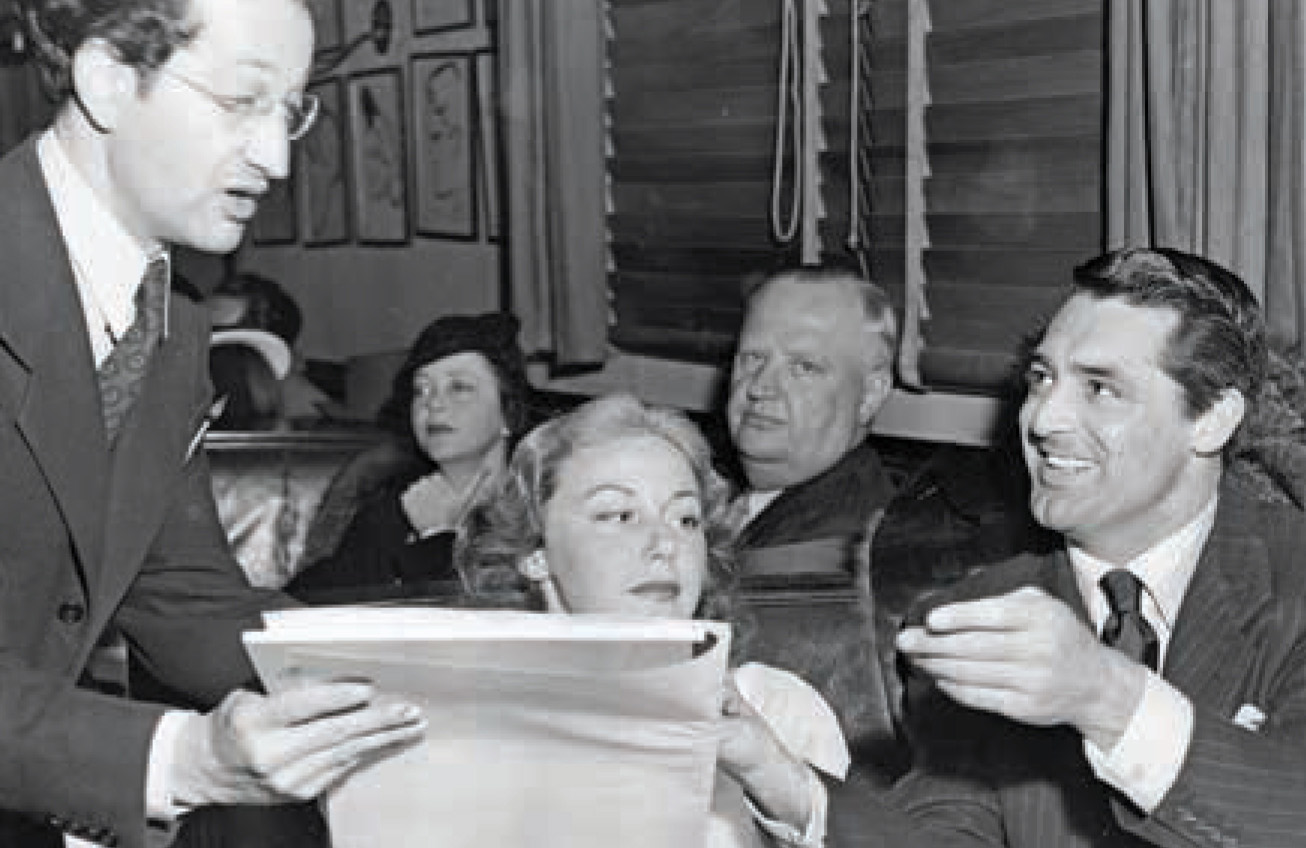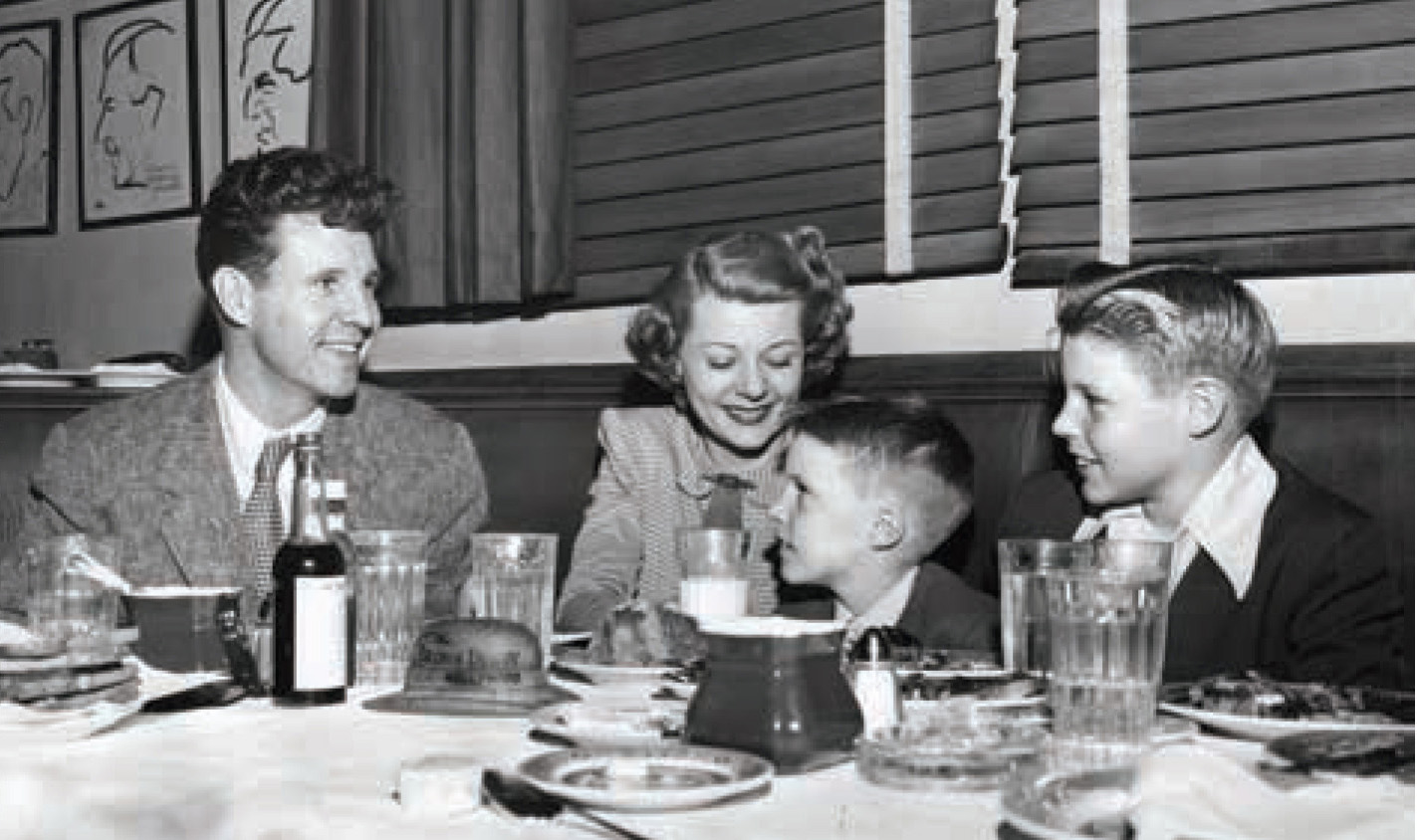OPEN: 1926–1985
LOCATION: 3427 Wilshire Boulevard Los Angeles, CA 90010
ORIGINAL PHONE: OX-5151
CUISINE: American
DESIGN: Carl Jules Weyl
BUILDING STYLE: Roadside Vernacular
CURRENTLY: Equitable Life Building

Postcard featuring the original Brown Derby on Wilshire Boulevard, late 1940s.
THE FIRST BROWN DERBY RESTAURANT OPENED IN 1926, ACROSS THE STREET FROM THE AMBASSADOR HOTEL ON WILSHIRE BOULEVARD. Designed by Carl Jules Weyl, the art director for such films as Casablanca and The Big Sleep, the eatery was shaped like an enormous derby hat. In an era when it was common for establishments to be built in the shape of what they were selling, many thought that the Brown Derby was a haberdashery at first.
The Derby did well in its first couple of years and opened a second location at 1628 Vine Street in 1929, on Valentine’s Day. While the first location was famous for its hat-like shape, the second Brown Derby, which was close to Paramount Studios, Sunset Gower Studios, and Hollywood Center Studios, was known for its celebrity clientele. The restaurant was a tempting alternative to the studio commissaries. The booths along the north wall were reserved for A-listers. At lunchtime, it was not surprising to see Tyrone Power eating boiled brisket of beef, Janet Gaynor devouring her favorite turkey burger, Claudette Colbert savoring chicken hash, Eddie Cantor finishing off a hamburger steak, or Al Jolson eating chicken chow mein.
Jack Berry and Mary Livingston, who broadcast their radio show close by, often came into the Derby for lunch. They collected a lot of their material from the stars and other patrons at the restaurant, and even wrote radio scripts there. Gossip columnists Louella Parsons and Hedda Hopper were also common fixtures at the restaurant, holding court close to the Hollywood action. Every Wednesday at noon, you could find the Hollywood Women’s Press Club, an informal group of female reporters and writers, gathering at the Derby to get the latest scoop on Hollywood society. As Joan Crawford said about the Derby in the 1945 film Mildred Pierce, “People have to drink somewhere. Why not here?”
The Brown Derby was the birthplace of the Cobb salad, named after the restaurant’s owner, Robert Cobb. The story goes that, in the early 1930s, Sid Grauman, the owner of Grauman’s Chinese Theater on Hollywood Boulevard, came into the Derby late one night (the restaurant stayed opened until 4:00 AM), asking for something to eat. Robert Cobb threw together leftovers out of the icebox: a salad of lettuce, watercress, chicory, and romaine, topped with diced turkey, bacon, blue cheese, hard-boiled eggs, sliced tomatoes, and avocados. He drenched it in French dressing and tossed everything in a bowl.
The Cobb salad was a hit. It put the Brown Derby on the map, and stars began coming to the restaurant by the busload. Every day, the Derby’s awning-covered entry was packed with fans, as if it were the venue of a red carpet event.

The Marx Brothers—Zeppo (left) and Chico, 1932.

Clark Gable and Carole Lombard, 1938.
“It is not only a place to meet and talk over contracts and plan divorces and further romance under the bronze derby-hatted lights,” a 1932 article in Star Gazer magazine read, “it is also a place to eat. It is famous both as the spot where Jim Tully battled Jack Gilbert and the spot where you can get Special Hamburger brought sizzling to the table, in copper frying pans. It is a place where the stars gather at lunch time and after premieres to be seen—and to relish some caviar.”
In 1937, the original Brown Derby moved a block down the street to make way for new construction, settling in at 3377 Wilshire Boulevard. Although the Derby opened other locations in Los Feliz (4500 Los Feliz Boulevard) and Beverly Hills (9537 Wilshire Boulevard), the original restaurant was the only one built in the shape of a derby hat.
The restaurant served a broad and varied menu. Sunday was paprika chicken. Tuesday was declared Meatless Tuesday by the mayor of Los Angeles on behalf of the war effort. Cobb salad was always on the menu, with lobster thermidor and filet mignon becoming regular items. Waiters tossed the Derby’s chef’s salad, caliente salad, and about six others at the diners’ tables.
The Hollywood Brown Derby was definitely the place to see and be seen. Prior to mobile phones, the maître d’ would announce phone calls for celebrities, so everyone would know which stars were there. The Derby was Clark Gable’s favorite restaurant; he proposed to Carole Lombard in booth number 54. In 1941, Lombard threw him a surprise party for his fortieth birthday catered by the Brown Derby. Gable’s favorite items were served, including corned beef hash, pot roast, baked beans, sour cream biscuits, and orange chiffon cake.

Charles Laughton and Carole Lombard, 1940.

Zel, one of the Derby’s caricature artists, with Cary Grant and Mrs. Ray Milland, 1939.
Like Sardi’s in the theater district of New York, the Brown Derby’s walls were lined with 8 × 10-inch framed caricatures of the stars that frequented the restaurant. It has been said that a young man with a complicated last name—nicknamed “Vitch” for short—made the first drawings in exchange for hot coffee and soup. After that, several artists took on the task of creating caricatures for the Derby’s walls, including master caricaturist Jack Lane. The caricatures had a cameo in the 1955 I Love Lucy episode “Hollywood at Last,” when Lucy, Ethel, and Fred paid a visit to the Derby to rub elbows with the stars. In the episode, Lucy pointed out Eve Arden’s sketch and Jimmy Durante’s double-framed sketch—one for his face, and the other for his nose.

The Brown Derby on Vine Street, 1948.

Jimmy Durante with his Derby caricature, drawn by artist “Vitch,” 1936.
The original Brown Derby on Wilshire Boulevard was sold in 1975 and replaced by a strip mall named the Brown Derby Plaza. The iconic “hat” dome was hoisted onto the third floor of the complex. The Hollywood Brown Derby closed after a fire destroyed most of the structure in 1989. The site is now occupied by an apartment complex. The Beverly Hills Brown Derby closed in 1981, and then was demolished in 1983. The Los Feliz Brown Derby closed in the 1990s; the building, now housing another restaurant, still stands.
In 1987, the Original Brown Derby LLC began a licensing program that would replicate the Hollywood Brown Derby location, complete with the dishes from the original menu and the star caricatures that lined the walls. The Walt Disney Company was the first to license the Derby as part of Hollywood Studios in Orlando, Florida. 
![]()

Ozzie and Harriet Nelson at the Derby with their sons, Ricky and David, 1948.

New York ex-governor Al Smith with his wife, Catherine, and Hedda Hopper (far right), 1939.